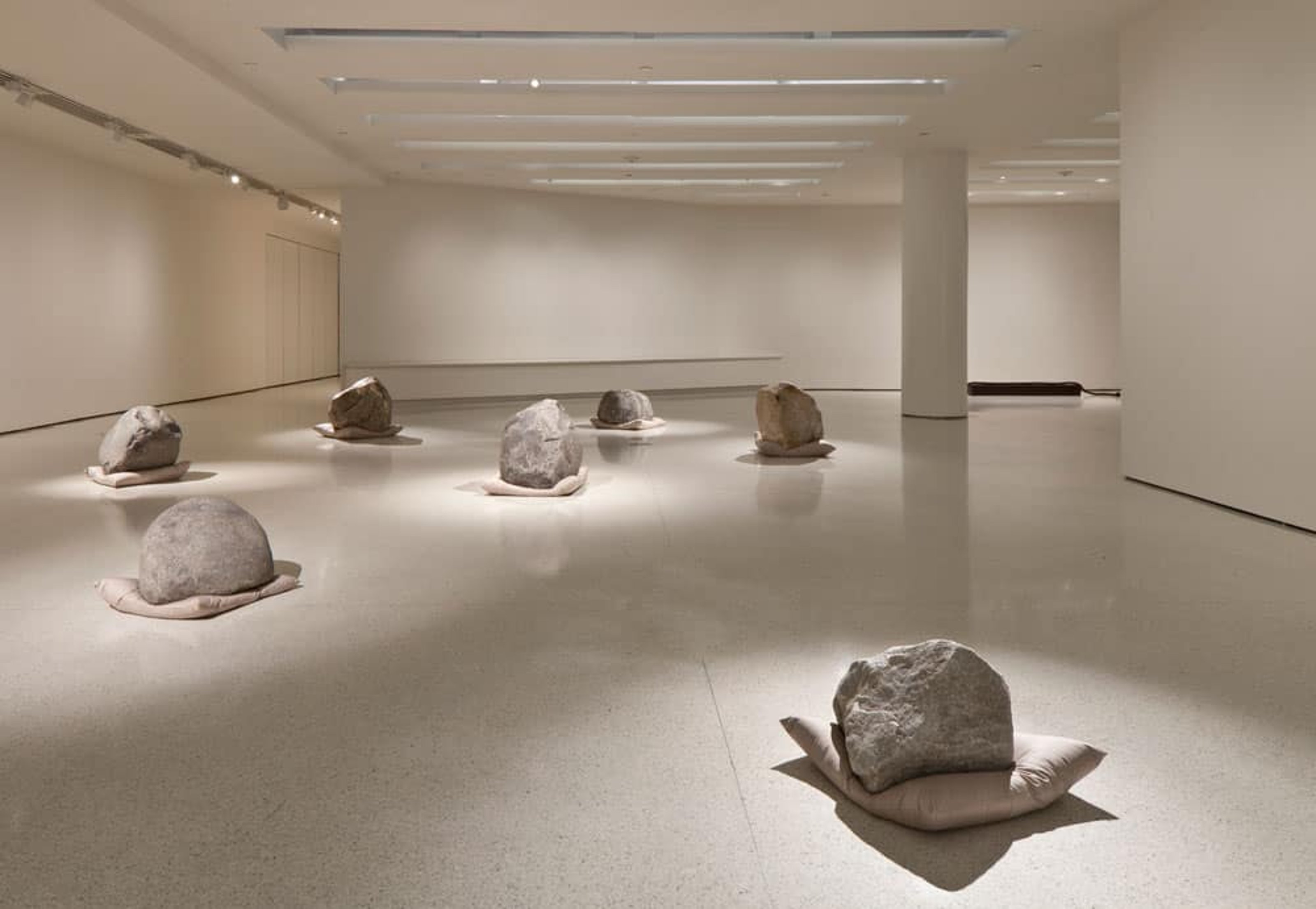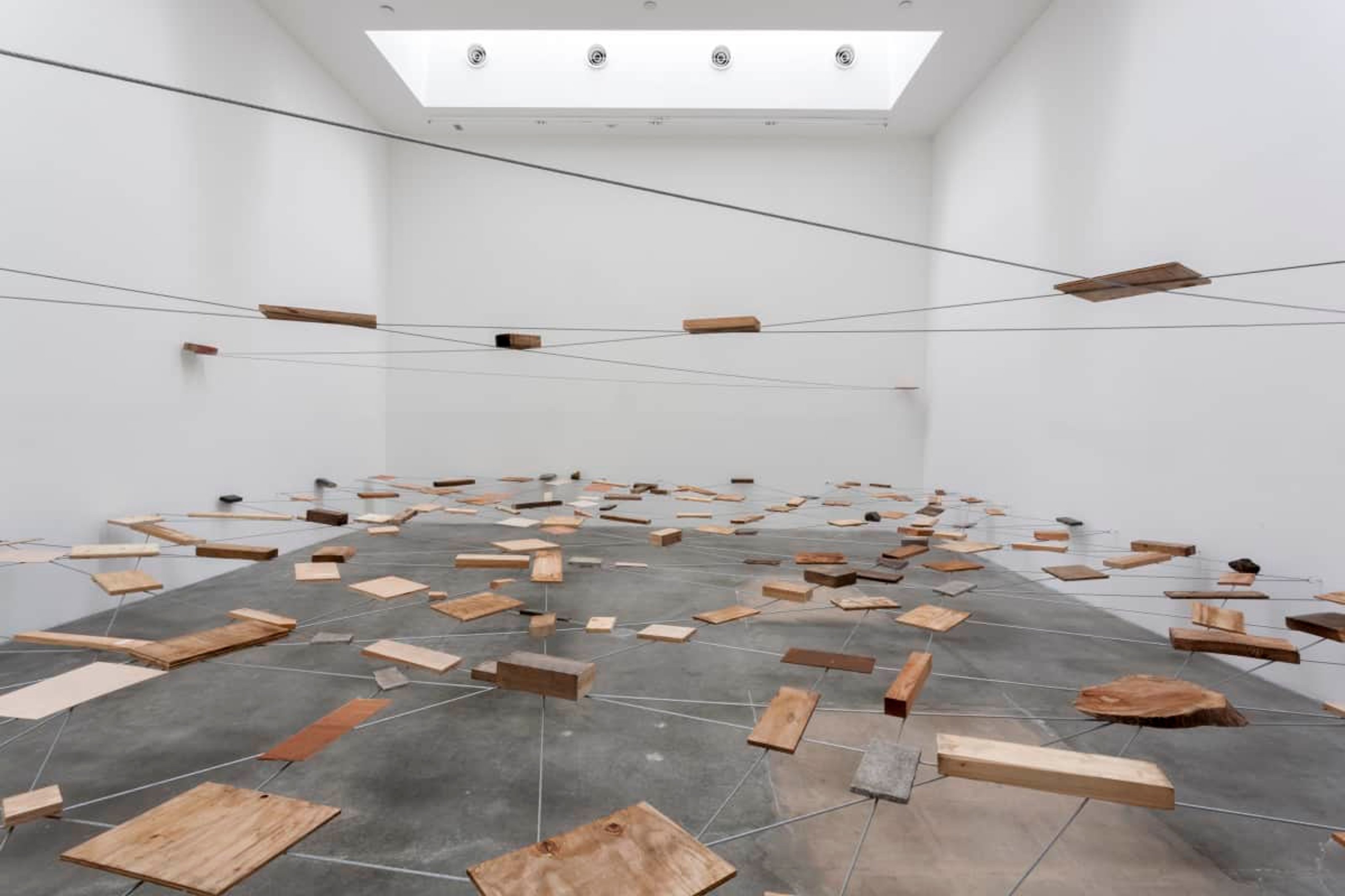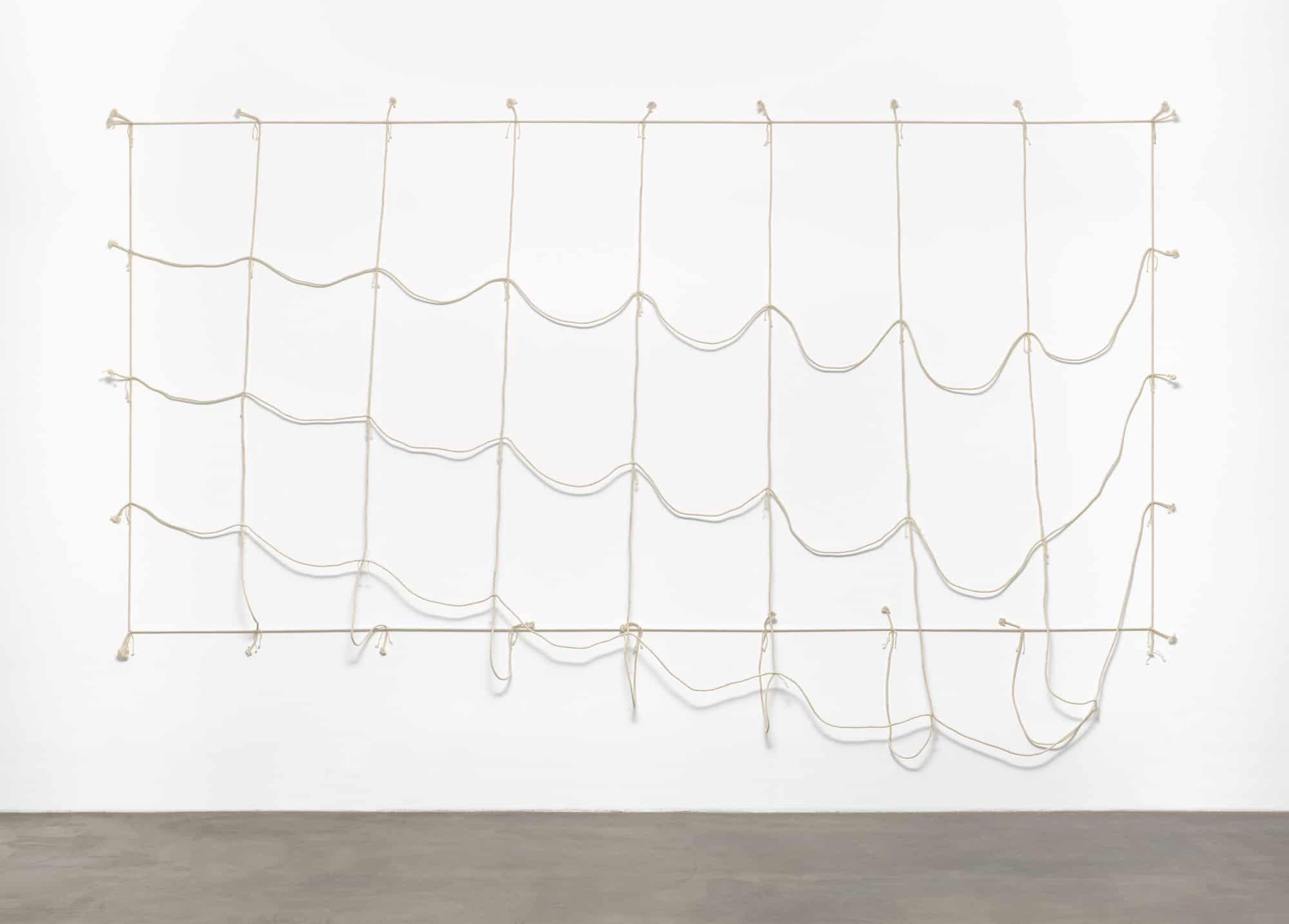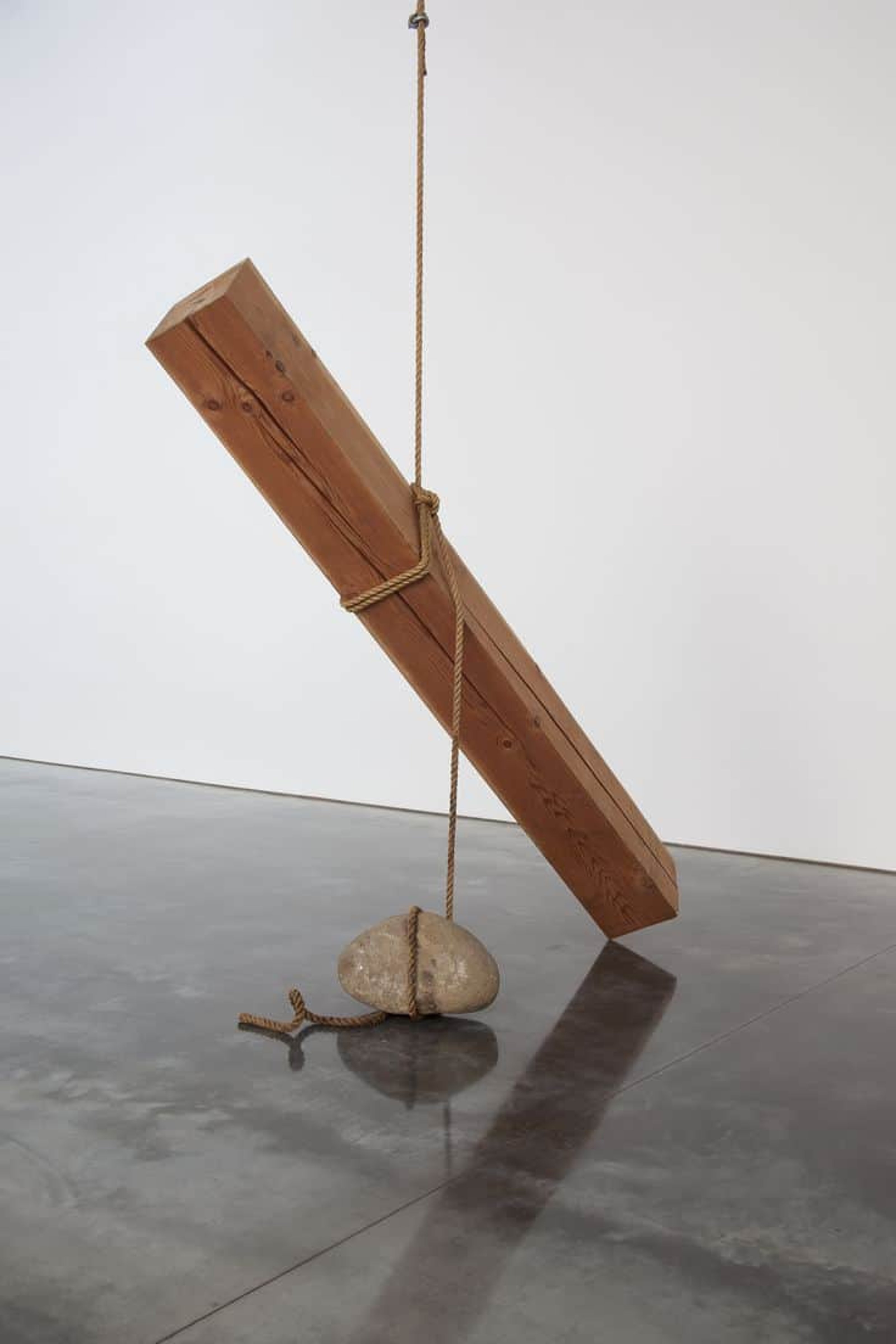The Mono-ha movement, translated literally as the “School of Things,” has remained formally and conceptually contemporary since its emergence in Tokyo in the late 1960s. Mono-ha was initially formed by Lee Ufan and Nobuo Sekine, who shared interests in rejecting representational art and strove to achieve authentic expressions of the essence of materials beyond surface qualities. Fluctuating over time, the group’s membership later included several other Japanese artists such as Kishio Suga, Susumu Koshimizu, Kōji Enokura, Jiro Takamatsu, Noriyuki Haraguchi and Noboru Takayama, many of whom attended Tama Art University in Tokyo. Often using organic and industrial materials, Mono-ha artists created ephemeral artworks that gained meaning in relation to each other and the site.
The formation of the movement began in 1968, often attributed to the exhibition of Sekine Nobuo’s Phase – Mother Earth at the first Kobe Suma Rikyu Park Contemporary Sculpture Exhibition. This structural site captured the interests of artist and critic Lee Ufan. Theorizing Sekine’s work as a direct “encounter” with the natural world, Lee’s writing reflected the shared fascination with material and spatial experiences instead of signifiers.

Lee Ufan – Relatum (formerly Language), 1971/2011 (Cushions, stones, and light, overall dimensions vary with installation). Photo: David Heald © Solomon R. Guggenheim Foundation, New York
Often utilized to illustrate Mono-ha’s interests and experimentation, Phase – Mother Earth (1968) was a seven-foot cylinder of earth that stands next to its shell in the ground. Despite appearing to have been lifted out of the ground by a machine, Phase-Mother Earth was dug by hand by Sekine and several other Mono-ha artists, including Susumu Koishimizu and Katsuro Yoshida. The objective of this work was, essentially, to activate an awareness of the connectedness of material and site, immersing the viewer in physical perception rather than visual. Through careful juxtaposition and topology, Sekine and his contemporaries critically address subjectivity and the separation of positive and negative space.
Mono-ha artists emphasized materiality primarily through framing and juxtaposition, placing emphasis not only the nature of the object (mono) but on the interdependency of matter.
In Katsuhiro Yoshida’s Cut-off (Hang) (1969), the materials are suspended by a single rope, each object completing one another’s state. Mono-ha aimed to convey the notion that art existed within a certain state of mind, stirring an awareness in the viewer of impermanence and nature. This mindset was linked to Buddhist philosophies that were often used in this era to question systems of meaning. Also interested in site-specific durational work, Kishio Suga often referred to his work as a “situation” rather than an installation. Exploring contingent relationships between materials, Suga creates structures that create a sense of physicality in space. Inevitably, the body of the viewer becomes a part of the artwork, essentially completing the work of art through presence.

Kishio Suga – Left-Behind Situation, 1972/2013 (wood, stone, steel, wire, rope). Courtesy Blum & Poe, Los Angeles
Profoundly questioning Western modernism and its humanist motivations, the artists of Mono-ha were interested in the relationship between man and material without an emphasis on authorship. This rejection by Mono-ha artists also involved dismissal of the growing modern art market, as can be found in the playful, performative and often accidental compositions.

Jiro Takamatsu – Slack of Net, 1969 (Cotton, rope and twine). © 2017 The Museum of Modern Art
Lee Ufan and other artists of Mono-ha were avid writers, utilizing aesthetic theory to counter presumptions of Western minimalism. During the formative years of Mono-ha, the imposition of the West permeated many aspects of daily life, particularly that of the United States. Tensions between Japan and the United States were still raw in the punishing wake of the 1960 renewal of the Treaty of Mutual Cooperation and Security between the United States and Japan (known as “ANPO” in Japan). Continuing occupation of the US military over the Japanese islands, ANPO infuriated the public and caused waves of mass protests throughout the decade. The destabilization of the era caused widespread debates on the significance of modern art, particularly Japan’s role within an international visual dialogue. The artists of Mono-ha proposed an alternative to the Western notion of the subject in favor of expanding the experiential possibilities of art.

Katsuro Yoshida – Cut-off (hang), 1969/1986 (Wood, rope, and stone)
The relationship between manmade and natural material has particular significance considering the alarming rate of industrialization in Japan, particularly Tokyo, during the 1960s. Therefore, despite a primary concern with material, the work of Mono-ha was not apolitical. In many ways, Mono-ha as an artistic phenomenon can be seen as a critique of the increasingly image-saturated world. The artists aimed to reveal that the very act of “seeing” itself was plagued with social restrictions that included systems from the West, encouraging a direct phenomenological contact with the world “as it is,” not through simulations.
Mono-ha artists imagined art as an experiential project, emphasizing physicality rather than opticality. The work of Mono-ha essentially de-objectified material and decentered man as the subject of art. Perhaps one of the most common mishaps of contemporary writers is to identify Mono-ha as a derivative movement of conventional minimalist art. While the Japanese artists were often shown alongside their Western contemporaries in international contexts, Mono-ha was decidedly non-humanist and approached material and purity of form in very different ways than artists in Europe and America. Mono-ha pushed the boundaries between the viewer, object, and site, and consequently that between man and nature. These artworks exist in a realm outside of modern art as we know it, continuing to expand the possibilities of experiential art after half a century.
Editor’s Note: The movement’s participants never actually referred to themselves as Mono-ha. This term was coined retroactively by critics Teruo Fujieda and Toshiaki Minemura in Bijutsu Techo magazine in 1973, several years after the Mono-ha artists began exhibiting work.